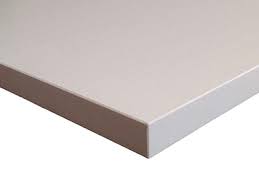Modular Cabinetry vs Traditional Carpentry: Pros & Cons
- Sgmurphybed
- Jul 23
- 2 min read
Updated: Jul 26
Modular Cabinetry
Pros:
1. Precise & Consistent Dimensions
Manufactured using CNC machinery, modular cabinetry ensures uniform measurements and clean finishes.
2. Fast Installation
Pre-fabricated and assembled on-site, significantly reducing renovation downtime.
3. Cost - Efficient (Long-Term)
Although upfront costs may seem higher, modular systems use durable materials such as ABS Edge Banding for all of the trimmings, which does not peel and long for a really long time. Finished with round and smooth edges.
4. Replaceable Parts
Individual modules or panels can be replaced or upgraded without tearing down the entire system.
5. Design Flexibility Within a System
Modular cabinet offers a wide range of colors, finishes, and configurations that can be planned ahead with 2D layout without missing out any details.
6. 15% extra Usable Internal Space
Modular cabinets are more efficient in design and material use, uses thinner yet stronger panels, reduces structural wastage and maximizes internal storage. Traditional carpentry often sacrifices internal space due to bulkier construction methods.
Cons:
1. Limited Customization for Odd Spaces
May not fit perfectly in awkward corners or uniquely shaped walls.
2. Fixed Sizing Options
Maximum module width limited 1.2 meters
3. Upfront Costs
While cost-effective over time, initial prices might be slightly higher than on-site carpentry, especially for premium laminates.
4. Dependent on Factory Lead Times
Any delay in factory production or shipping could affect the project schedule.
Traditional Carpentry (On-Site Built Cabinets)
Pros:
1. Highly Customizable
Can be tailored to fit any space perfectly, no matter how irregular or uneven.
2. Creative Flexibility
Carpenters can craft custom features, curves, or finishes that modular systems may not offer.
3. Lower Initial Cost (Sometimes)
In some markets, on-site carpentry may appear cheaper depending on labor and material choices.
4. On-the-Spot Adjustments
Changes can be made on-site as the build progresses, providing more adaptability.
Cons:
1. Time-Consuming
Longer lead times due to manual labor, especially if skilled carpenters are limited.
2. Inconsistent Quality
Finish and precision may vary depending on the skill of the carpenter and tools used.
3. Messy Worksite
Sawdust, fumes, and noise are common due to on-site cutting and assembly.
4. Durability Concerns
Traditional glue-and-nail methods may wear down faster, especially without proper edge protection or sealing. Peeling overtime.
5. Difficult to Replace or Modify
Once built, laminate cracks, alterations usually require major dismantling or full replacement.
Wastage of Internal Depth and Height
45 degree Finger groove opening requires at least 30 to 50mm spacing inorder to allow your fingers to open the doors.
While back panels are usually spaced apart from the walls by 50 to 60mm due to construction methods.
Conclusion
In conclusion, modular cabinetry stands out as a superior choice over traditional carpentry due to its precision, consistency, and space-optimizing design. Manufactured using advanced technology, modular systems offer better durability, cleaner finishes, and a more efficient use of internal space often providing MORE storage within the same footprint.






